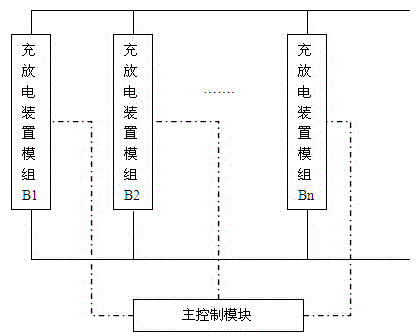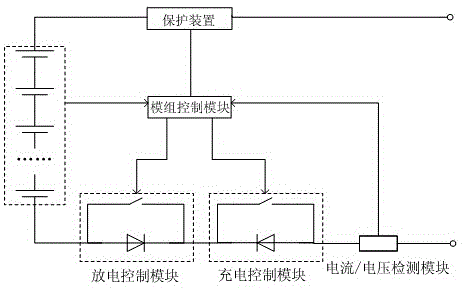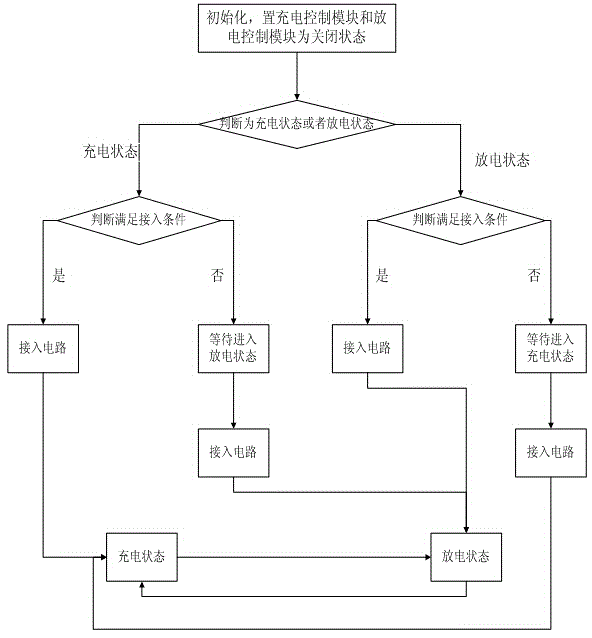Control system having protection function and supporting adding of different types of chargeable and dischargeable devices and method thereof
A charge-discharge device and protection function technology, which is applied to the control system and its field that supports the addition of different types of charge-discharge devices with protection functions, can solve the problems of shortened life of the battery pack, troublesome use of the battery pack, and slow capacity decay, and achieve High reliability, easy operation, and improved safety
- Summary
- Abstract
- Description
- Claims
- Application Information
AI Technical Summary
Problems solved by technology
Method used
Image
Examples
Embodiment Construction
[0053] Describe technical scheme of the present invention in further detail below in conjunction with accompanying drawing: as figure 1 As shown, the control system that supports the addition of different types of charging and discharging devices with protection functions includes two or more parallel charging and discharging device modules and a main control module. The charging and discharging device modules communicate with each other through positive and negative interfaces The DC buses are connected in parallel for charging or discharging; figure 2 As shown, the charging and discharging device module includes a charging and discharging device, a charging control module, a discharging control module, a current / voltage detection module, a protection device and a module control module, and the charging and discharging device, a charging control module, a protection The device and the discharge control module are connected in series on the loop, and the current / voltage detec...
PUM
 Login to View More
Login to View More Abstract
Description
Claims
Application Information
 Login to View More
Login to View More - R&D
- Intellectual Property
- Life Sciences
- Materials
- Tech Scout
- Unparalleled Data Quality
- Higher Quality Content
- 60% Fewer Hallucinations
Browse by: Latest US Patents, China's latest patents, Technical Efficacy Thesaurus, Application Domain, Technology Topic, Popular Technical Reports.
© 2025 PatSnap. All rights reserved.Legal|Privacy policy|Modern Slavery Act Transparency Statement|Sitemap|About US| Contact US: help@patsnap.com



